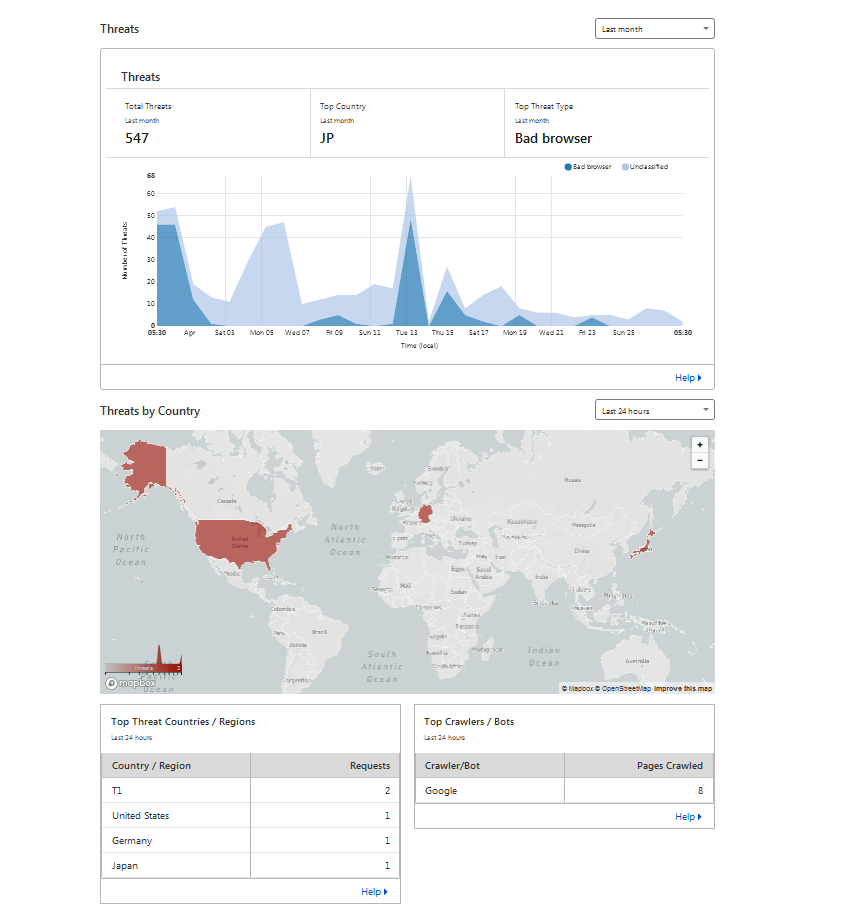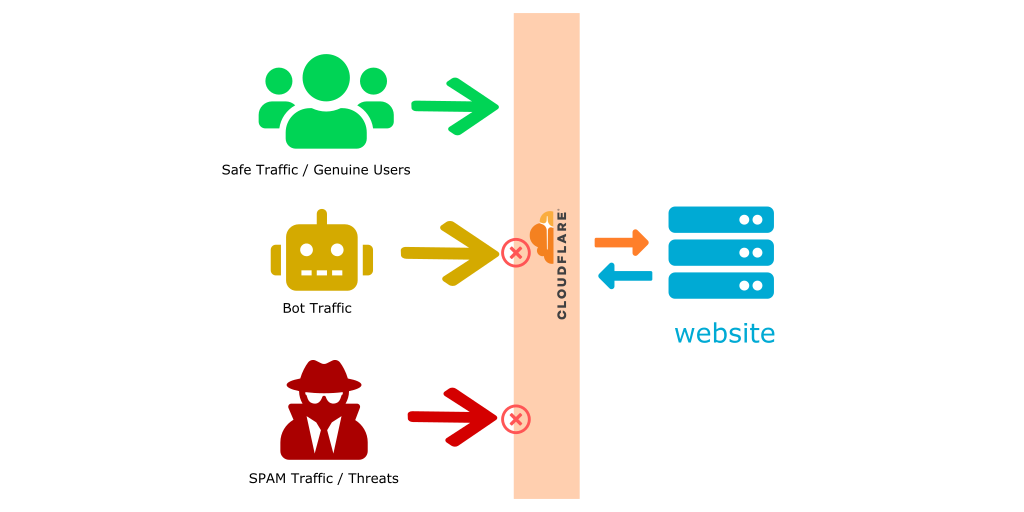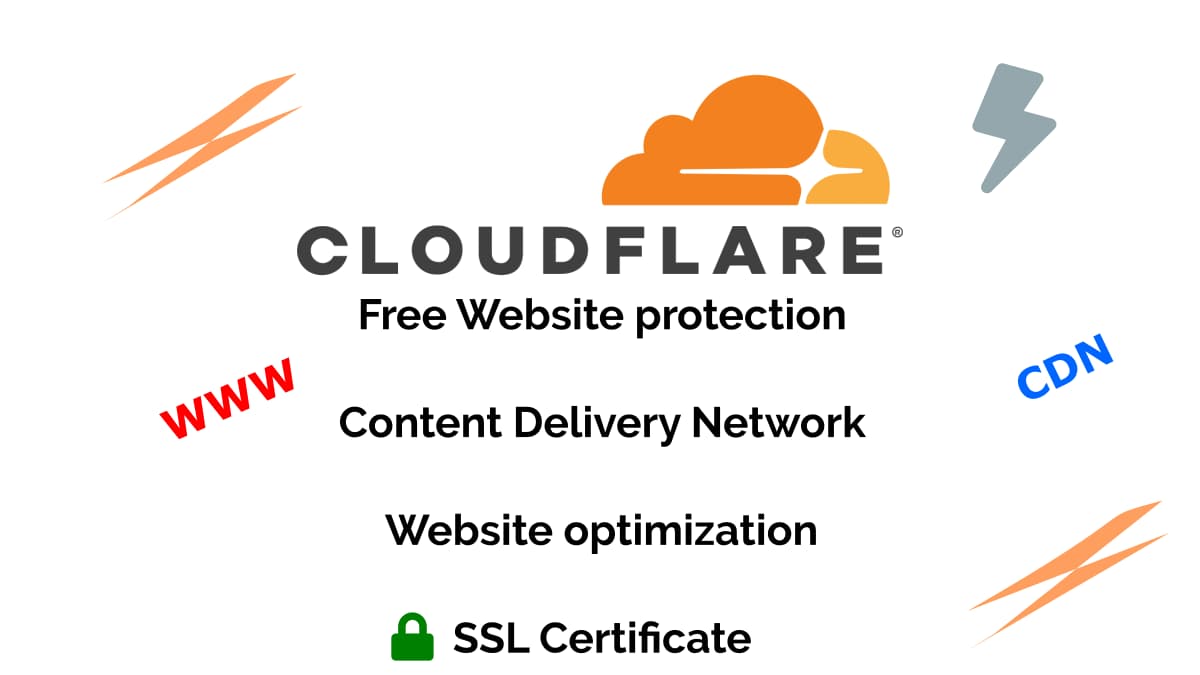What is cloudflare?
Cloudflare is a webservices company headquartered in the US, with a mission to secure the web properties like websites, banking systems, credit card networks etc., Cloudflare with its vast network of edge servers located in almost all the countries offer free CDN service and free DDos protection (protection against distributed denial of service attack). Cloudflare’s intelligent traffic routing algorithm identifies and mitigates the DDos attack where a large number of requests are sent to a web server to overwhelm the server and take it offline.
The screenshot below is an example of the Cloudflare security analytics, which gives out a lot of details like how many security threats were blocked and what kind of threats are blocked, and countries from where most of the threats originate.

Any website can utilize the free CDN provided by cloudflare to improve the page loadtime and the overall website performance irrespective of the location your hosting provider, you could provide a seamless experience to your users with lowest latency anywhere in the world.
How Cloudflare Works?
Cloudflare is an easily plug able security layer that can be added to any website, which helps in securing your website from threats as well as optimizing your website resources and deliver it to your users quickly and efficiently.

Cloudflare with its vast anycast network around the world, forms a protective gateway in between your webserver hosting your website and the internet. So each time a request is received cloudflare will inspect the incoming request and based on various parameters such as location, browser from where the request is originating, number of requests received from the same IP address and the resources required. This way cloudflare can easily segregate good and bad traffic, eliminate threats & spammy requests from bots proactively allowing only genuine user traffic to reach your origin servers. Thereby, reducing the load on your server and avoiding service disruption.
By enabling cloudflare proxy (orange cloud), cloudflare will hide your original website server IP address with cloudflare ip address. This prevents threats and attacks that directly target the IP address of your webserver. An added bonus, is that this also hides your actually hosting provider.
How to use Cloudflare?
Cloudflare does not require any additional software or hardware. It can be easily with any website at the DNS level, just by changing the name servers provided by your hosting provider to cloudflare name servers. Once this step is done, you will have to turn on cloudflare protection by clicking on the orange cloud as shown below:


Cloudflare protection, content delivery optimzation and proxying through cloudflare edge network is available in Free, Pro, Business and Enterprise plans.
Why use Cloudflare?
- Cloudflare offers free DNS service.
- Cloudflare offers free content delivery network (CDN) with its large edge network availability across the globe.
- It offers free SSL certificate, you can instantly convert a http website to HTTPS compatiable website with free cloudflare SSL certificate.
- Cloudflare offers free DDos protection.
- It offers free content caching, enabling faster page load time.
- It offers firewall service, which is available even in the cloudflare free plan. Using this you can block bots, block traffic from specific countries, block IP addresses etc.
- It allows you to easily export and import DNS settings.
- Cloudflare also offers DNS based load balancing for as low as $5 with two origin servers and 500K free DNS queries included. This includes active health monitoring for each origin server, automatic failover, Geo location based routing.
- It also allows you to manage DNS settings of multiple domains within a single account, even in the free plan without any restrictions on the number of DNS queries.
